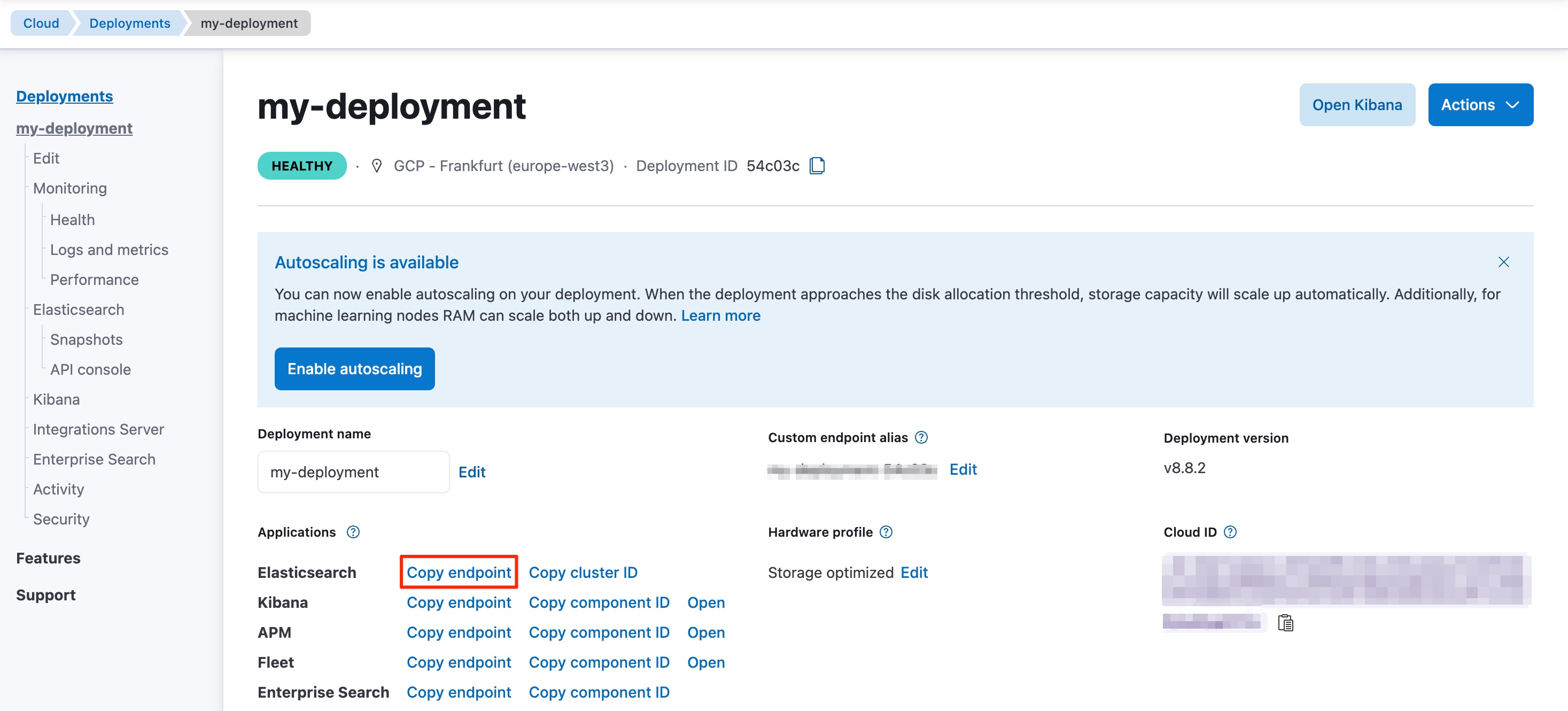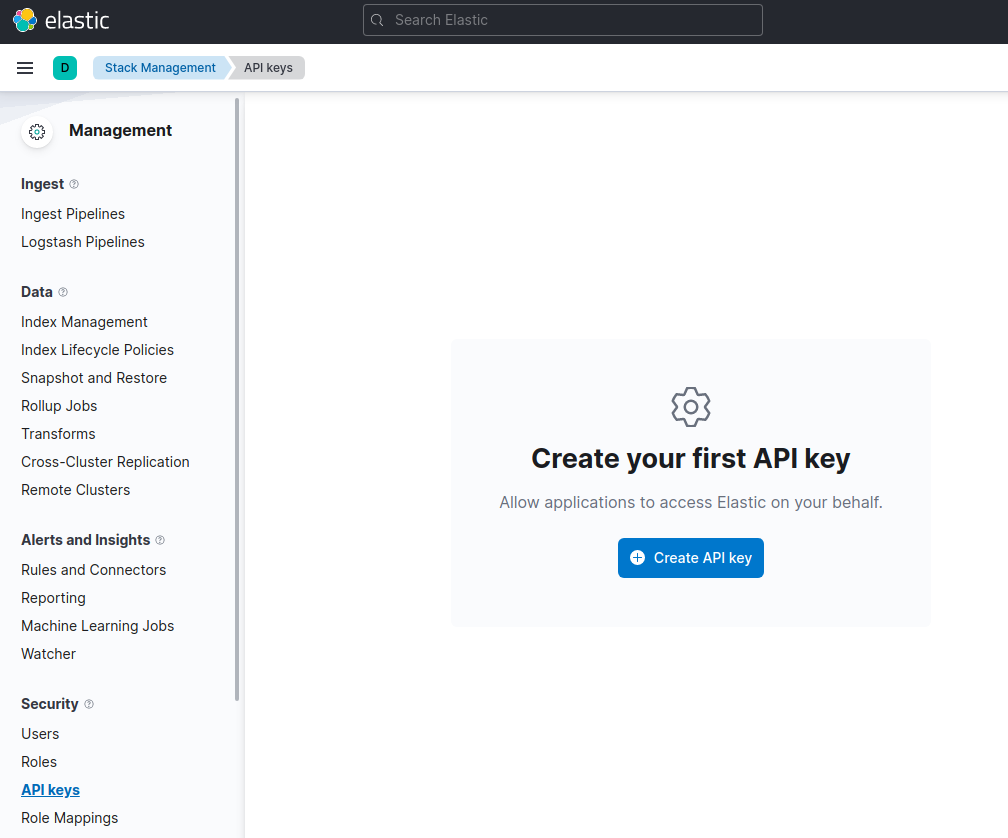Getting started
editGetting started
editThis page guides you through the installation process of the Java client, shows you how to instantiate the client, and how to perform basic Elasticsearch operations with it.
Requirements
edit- Java 8 or later.
- A JSON object mapping library to allow seamless integration of your application classes with the Elasticsearch API. The examples below show usage with Jackson.
Installation
editInstallation in a Gradle project by using Jackson
editdependencies {
implementation 'co.elastic.clients:elasticsearch-java:8.15.5'
implementation 'com.fasterxml.jackson.core:jackson-databind:2.17.0'
}
Installation in a Maven project by using Jackson
editIn the pom.xml of your project, add the following repository definition and
dependencies:
<project>
<dependencies>
<dependency>
<groupId>co.elastic.clients</groupId>
<artifactId>elasticsearch-java</artifactId>
<version>8.15.5</version>
</dependency>
<dependency>
<groupId>com.fasterxml.jackson.core</groupId>
<artifactId>jackson-databind</artifactId>
<version>2.17.0</version>
</dependency>
</dependencies>
</project>
Refer to the Installation page to learn more.
Connecting
editYou can connect to the Elastic Cloud using an API key and the Elasticsearch endpoint.
// URL and API key
String serverUrl = "https://localhost:9200";
String apiKey = "VnVhQ2ZHY0JDZGJrU...";
// Create the low-level client
RestClient restClient = RestClient
.builder(HttpHost.create(serverUrl))
.setDefaultHeaders(new Header[]{
new BasicHeader("Authorization", "ApiKey " + apiKey)
})
.build();
// Create the transport with a Jackson mapper
ElasticsearchTransport transport = new RestClientTransport(
restClient, new JacksonJsonpMapper());
// And create the API client
ElasticsearchClient esClient = new ElasticsearchClient(transport);
// Use the client...
// Close the transport, freeing the underlying thread
transport.close();
Your Elasticsearch endpoint can be found on the My deployment page of your deployment:

You can generate an API key on the Management page under Security.

For other connection options, refer to the Connecting section.
Operations
editTime to use Elasticsearch! This section walks you through the basic, and most important, operations of Elasticsearch. For more operations and more advanced examples, refer to the Using the Java API Client page.
Creating an index
editThis is how you create the product index:
esClient.indices().create(c -> c
.index("products")
);
Indexing documents
editThis is a simple way of indexing a document, here a Product application object:
Product product = new Product("bk-1", "City bike", 123.0);
IndexResponse response = esClient.index(i -> i
.index("products")
.id(product.getSku())
.document(product)
);
logger.info("Indexed with version " + response.version());
Getting documents
editYou can get documents by using the following code:
GetResponse<Product> response = esClient.get(g -> g
.index("products")
.id("bk-1"),
Product.class
);
if (response.found()) {
Product product = response.source();
logger.info("Product name " + product.getName());
} else {
logger.info ("Product not found");
}
Searching documents
editThis is how you can create a single match query with the Java client:
String searchText = "bike";
SearchResponse<Product> response = esClient.search(s -> s
.index("products")
.query(q -> q
.match(t -> t
.field("name")
.query(searchText)
)
),
Product.class
);
Updating documents
editThis is how you can update a document, for example to add a new field:
Product product = new Product("bk-1", "City bike", 123.0);
esClient.update(u -> u
.index("products")
.id("bk-1")
.upsert(product),
Product.class
);
Deleting documents
editesClient.delete(d -> d.index("products").id("bk-1"));
Deleting an index
editesClient.indices().delete(d -> d
.index("products")
);
Examples
editThe examples folder in the Github repository contains full working examples showing how to set up and use the client.
Further reading
edit- Learn more about the API conventions of the Java client.